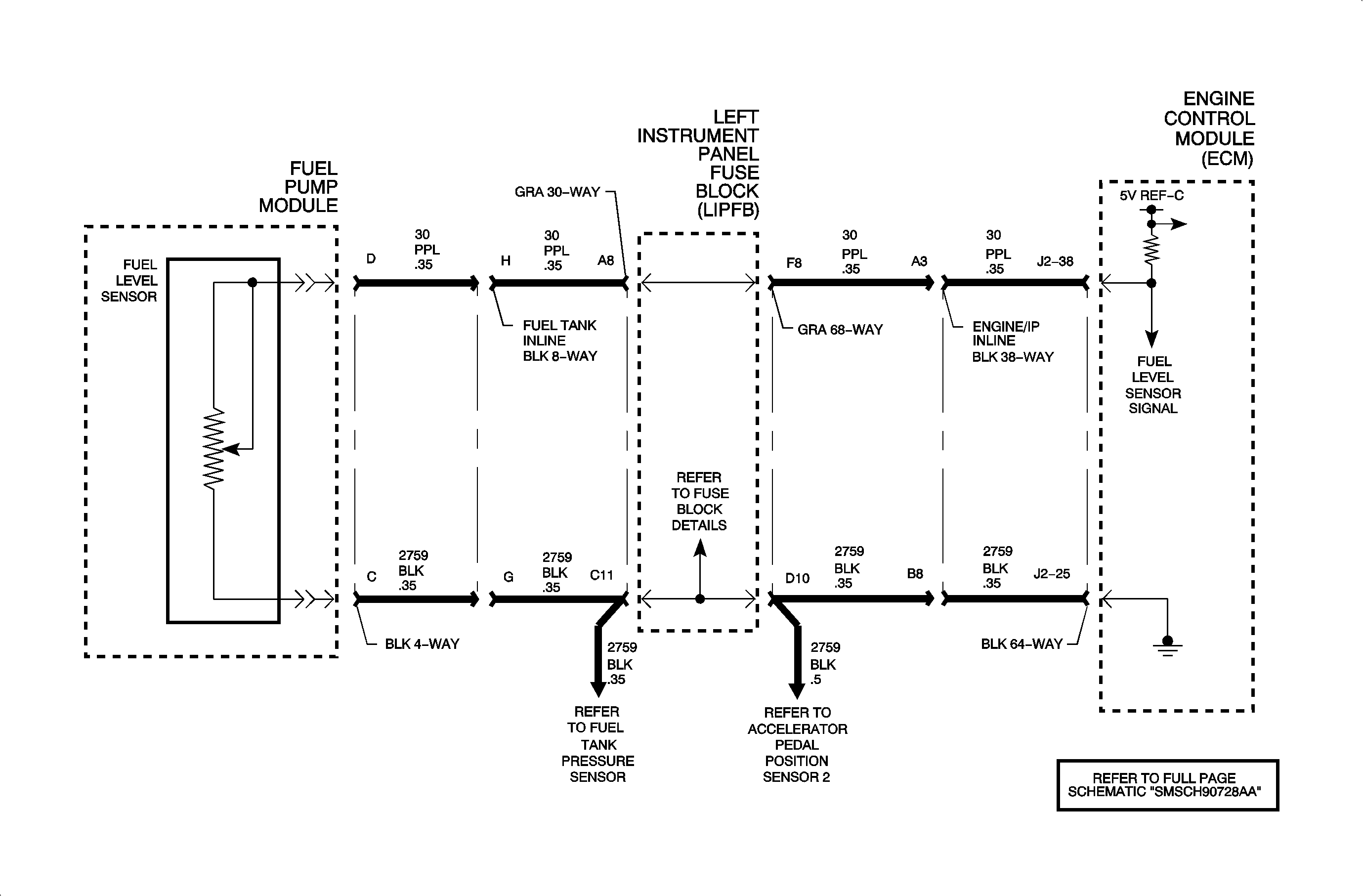
Circuit Description
The fuel level sensor is variable resistor that varies resistance according to changes in the level of fuel in the fuel tank. The ECM supplies a 5-volt reference through a pull-up resistor to the sensor, which is connected to ground. When the level of fuel in the fuel tank is high, the sensor resistance is low, with low voltage on the signal line. As the fuel level decreases, the sensor resistance increases, with higher voltage on the signal line. The ECM monitors the fuel level sensor signal voltage to determine the fuel tank level. The ECM will send this fuel level information over the controller area network (CAN) link to the BCM. The BCM in turn will average this information with respect to vehicle speed, then send it over the Class II link to the I/P cluster which will position the fuel gage. DTC P0462 will set if the fuel tank level sensor signal voltage at the ECM is below the calibrated voltage value.
Conditions for Setting the DTC
DTC P0462 will set if the fuel level sensor signal voltage is less than 0.35 volts when:
| • | The condition exists for longer than 5 seconds. |
| • | The ignition is ON. |
DTC P0462 diagnostic runs continuously with the ignition ON.
DTC P0462 is a type D DTC.
Diagnostic Aids
Important: FUEL LEVEL SENSOR voltage on the scan tool is instantaneous, NOT averaged.
To locate an intermittent problem, use the scan tool to monitor FUEL LEVEL SENSOR with the ignition ON and the engine OFF. Wiggling the wires while watching for a change in FUEL LEVEL SENSOR voltage may locate the area where a short to ground in the wiring may exist.
If DTC P0462 is active, the fuel gage will take around 15 seconds to go to empty as long as no vehicle speed is present with the transmission in park. If these conditions are not met, the fuel gage may take a long time to reach empty.
The low fuel telltale will NOT be commanded ON if DTC P0462 is active.
Fuel level sensor resistance range is 19 ohms with the float at the top position, indicating a full tank, through 251 ohms with the float at the bottom position, indicating an empty tank.

